ISO 22000 certification in Kenya
Get Free Consultation
PopularCert is your trusted partner for ISO 22000 certification in Kenya, providing expert consulting services to help food businesses achieve international food safety standards. Our experienced consultants will guide you through the entire certification process, ensuring compliance and quality at every step. With PopularCert, you’ll receive tailored solutions to meet your unique needs, making your certification journey smooth, efficient, and cost-effective. We are committed to helping you achieve food safety excellence, build customer trust, and enhance your competitive edge in both local and international markets.
What is ISO 22000?
ISO 22000 is an international standard that provides guidelines for a Food Safety Management System (FSMS), ensuring the safety of food across the entire supply chain, from production to distribution. It incorporates Hazard Analysis and Critical Control Points (HACCP) principles to identify and manage food safety risks, promoting a preventive and organized approach. By following ISO 22000, businesses can implement effective safety measures, meet legal requirements, and gain consumer trust, making it easier for them to compete in the global food market while ensuring the production of safe, high-quality food.
Why ISO 22000 Certification is Important in Kenya?
ISO 22000 certification is crucial for food businesses in Kenya as it ensures the safety of food products, which is essential for consumer health. By implementing a Food Safety Management System (FSMS), businesses can effectively manage risks, comply with food safety regulations, and improve product quality. With increasing consumer awareness about food safety, ISO 22000 certification helps companies gain credibility, enhance their reputation, and access global markets. For Kenya’s growing food industry, this certification is a vital step towards ensuring safe, high-quality food for all.
How to Get ISO 22000 Certification In Kenya?

Process to Get ISO 22000 Certification In Kenya
Consultation and Gap Analysis
PopularCert’s specialists assess your organization’s specific requirements and existing systems. We conduct a thorough gap analysis to pinpoint areas needing improvement to meet ISO standards.
Planning, Documentation, and Policy Development
Following the gap analysis, we create a customized implementation plan, define resource needs, and assist in developing necessary policies and documentation. These are seamlessly integrated into your current organizational framework.
Training and Awareness
Comprehensive training ensures your team understands ISO requirements and their responsibilities in maintaining the management system effectively.
Internal Audit and Management Review
We perform internal audits to evaluate system effectiveness and address any non-conformities. A management review aligns the system with your organization’s objectives and ISO standards.
External Certification Audit and Certification
After successfully completing the external audit, your organization will earn ISO certification. This reflects your commitment to excellence, strengthens credibility, and builds lasting trust with customers and stakeholders.
Benefits Of ISO 22000 Certification In Kenya
- Improved Food Safety : ISO 22000 helps businesses identify and control food safety risks, ensuring that products are safe for consumption. This reduces the risk of foodborne illnesses and protects customers.
- Compliance with Regulations: The certification ensures businesses meet local and international food safety laws and regulations, helping avoid fines and legal issues.
- Increased Customer Confidence: With ISO 22000 certification, customers can trust that your products are safe and meet high-quality standards, which boosts customer loyalty and satisfaction.
- Better Risk Management: The standard helps businesses identify potential food safety hazards early, allowing for better control and risk management throughout the production process.
- Enhanced Reputation: Being ISO 22000 certified improves your company’s reputation in the market as a reliable and responsible food business, attracting more customers and business opportunities.
- Access to International Markets: ISO 22000 is recognized worldwide, which can help Kenyan businesses expand into international markets and gain a competitive edge.
- Operational Efficiency: The certification helps streamline food safety processes, improving overall efficiency, reducing waste, and lowering costs in the long term.
- Employee Involvement and Awareness: ISO 22000 encourages staff to actively participate in food safety practices, creating a culture of safety and responsibility within the company.
Types Of ISO Certification In Kenya
- ISO Certification In Kenya
- ISO 9001 Certification
- ISO 14001 Certification
- ISO 45001 Certification
- ISO 22000 Certification
- ISO 27001 Certification
- ISO 17025 Certification
- ISO 13485 Certification
- CE Mark Certification
- ISO 20000-1 Certification
- GMP Certification
- Halal Certification
- SOC-1 Certification
- SOC-2 Certification
Get Free Consultation
Our Clients





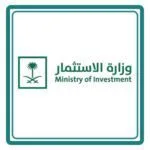
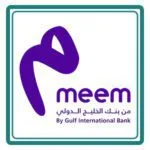
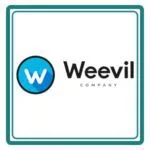
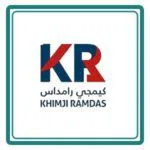


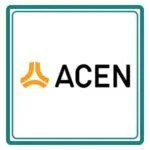
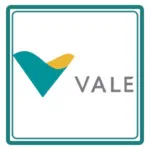





Which Industries Need ISO 22000 Certification in Kenya?
- Food Processing Companies: Including dairy, meat, snacks, and beverage manufacturers who must ensure safe production.
- Agriculture and Farming: Farms and agribusinesses involved in crop and livestock production that supply food markets.
- Exporters of Fresh Produce: Companies exporting fruits, vegetables, and flowers that need to meet international food safety standards.
- Dairy Industry: Milk processors, yogurt producers, and cheese manufacturers requiring hygiene and quality assurance.
- Food Packaging Companies: Manufacturers of packaging materials that come in contact with food and need to meet hygiene standards.
- Food Transportation and Logistics: Businesses transporting perishable goods who need to prevent contamination and maintain freshness.
Cost Of ISO 22000 Certification In Kenya
The cost of ISO 22000 certification in Kenya varies depending on factors such as the size of your organization, the complexity of your food safety management system, and the specific food safety requirements you need to meet. PopularCert simplifies the process by offering tailored solutions to address your organization’s unique food safety needs. Partnering with PopularCert ensures expert guidance, a smooth certification journey, enhanced food safety practices, and a competitive edge through adherence to internationally recognized ISO 22000 standards in Kenya. For more information and to apply for your ISO 22000 Certification In Kenya. We will guide you through the process and provide details on the cost involved to help you get started on your ISO 22000 Certification journey with PopularCert in Kenya.
Why Choose PopularCert For ISO 22000 Certification In Kenya?
Choose PopularCert for ISO 22000 certification in Kenya to ensure your organization meets international food safety standards and achieves exceptional results. Our expert consultants will guide you through every stage, from conducting a comprehensive gap analysis to successfully obtaining certification. We help you implement robust food safety practices, optimize your food safety management system, and enhance overall operational efficiency. With PopularCert, you’ll receive tailored support that addresses your organization’s specific food safety needs, ensuring a smooth certification process and long-term success. Trust us to improve your food safety performance, build customer trust, and unlock new business opportunities with ISO 22000 certification.
GET A FREE CONSULTATION NOW
FAQ
What is ISO 22000 certification?
ISO 22000 is an international standard that outlines the requirements for a Food Safety Management System (FSMS), helping organizations ensure food safety throughout the supply chain.
Why is ISO 22000 certification important for Kenyan food businesses?
Achieving ISO 22000 certification demonstrates a company’s commitment to food safety, enhances consumer confidence, and can open up new market opportunities by meeting international standards.
How can a company in Kenya obtain ISO 22000 certification?
To achieve ISO 22000 certification, a company must develop and implement an effective FSMS, undergo an internal audit, and then pass an external audit conducted by a recognized certification body.
What are the benefits of ISO 22000 certification for Kenyan organizations?
Benefits include improved food safety performance, compliance with regulatory requirements, increased customer trust, and a competitive advantage in both local and international markets.
How long does it take to get ISO 22000 certification in Kenya?
The duration varies depending on the organization’s size and complexity, but typically, the process can take several months from initial preparation to successful certification.
